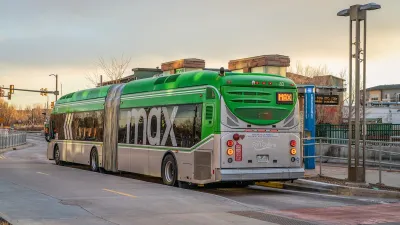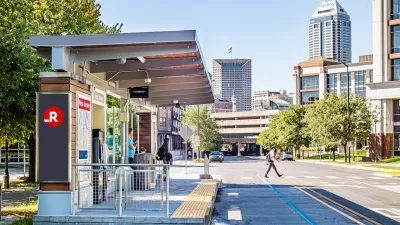During the last decade, bus rapid transit (BRT) has revolutionized regional transportation planning in much of the developing and developed world.
Bus Rapid Transit (BRT) went from being a fringe transportation option used in a handful of Brazilian and Australian cities to becoming a prominent mass transportation alternative for local and national governments.
Arguably the BRT concept with highest recognition is the provision of an exclusive right-of-way for bus transit coupled with high-frequency service. In South America, BRT systems in Curitiba, Brazil, and Bogotá, Colombia, feature networks of dedicated lanes designated for exclusive use by large-capacity, articulated buses, with expedited boarding and alighting.
"Twelve Latin American cities, three Australian cities, seven U .S. cities, eight Asian cities, and eighteen European cities have BRTs in place. Some are complete systems while others are single lines. Systems actively under construction also span the globe, including Dar es Salaam in Tanzania, Jinan in China, Bologna in Italy, Mérida in Venezuela, and Auckland in New Zealand."
From the conclusion: "Overall our results paint a mixed picture of the appreciation of prices due to BRT extensions. On the one hand, the evidence suggests price appreciation for properties already served by BRT, since they also benefited from the extensions. The estimated asking price premium is between 15 and 20 percent, although the appreciation began one year before the extension was inaugurated. This is significant, given that we know little about the potential magnitude of these effects. By contrast, we found limited evidence of asking price increases for properties along a corridor that previously did not have a local BRT station, but that now is served by the extension."
[Editor's note: You must login (free) to access the full PDF of this article.]
Thanks to Ann LeRoyer
FULL STORY: Land Value Impacts of Bus Rapid Transit

Alabama: Trump Terminates Settlements for Black Communities Harmed By Raw Sewage
Trump deemed the landmark civil rights agreement “illegal DEI and environmental justice policy.”

Planetizen Federal Action Tracker
A weekly monitor of how Trump’s orders and actions are impacting planners and planning in America.

The 120 Year Old Tiny Home Villages That Sheltered San Francisco’s Earthquake Refugees
More than a century ago, San Francisco mobilized to house thousands of residents displaced by the 1906 earthquake. Could their strategy offer a model for the present?

Indy Neighborhood Group Builds Temporary Multi-Use Path
Community members, aided in part by funding from the city, repurposed a vehicle lane to create a protected bike and pedestrian path for the summer season.

Congestion Pricing Drops Holland Tunnel Delays by 65 Percent
New York City’s contentious tolling program has yielded improved traffic and roughly $100 million in revenue for the MTA.

In Both Crashes and Crime, Public Transportation is Far Safer than Driving
Contrary to popular assumptions, public transportation has far lower crash and crime rates than automobile travel. For safer communities, improve and encourage transit travel.
Urban Design for Planners 1: Software Tools
This six-course series explores essential urban design concepts using open source software and equips planners with the tools they need to participate fully in the urban design process.
Planning for Universal Design
Learn the tools for implementing Universal Design in planning regulations.
Clanton & Associates, Inc.
Jessamine County Fiscal Court
Institute for Housing and Urban Development Studies (IHS)
City of Grandview
Harvard GSD Executive Education
Toledo-Lucas County Plan Commissions
Salt Lake City
NYU Wagner Graduate School of Public Service





























